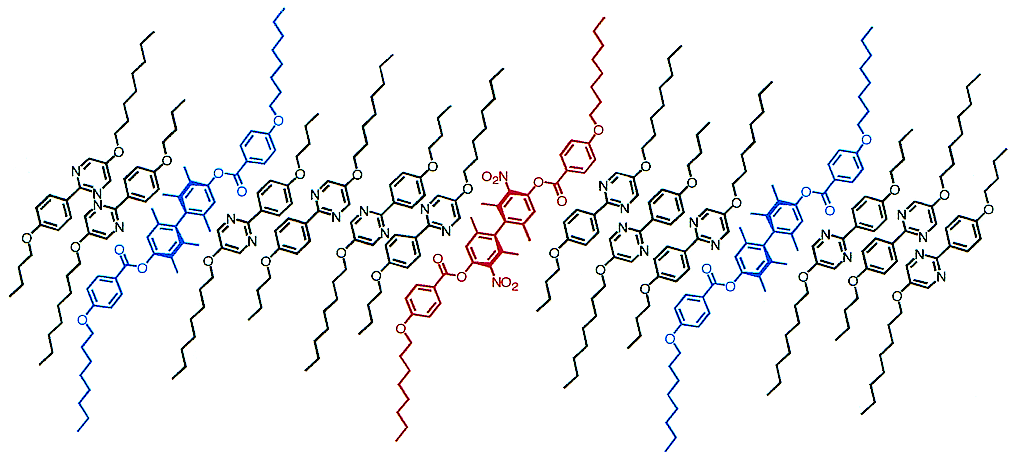C. Scott Hartley, Carmen Lazar, Michael D. Wand, and Robert P. Lemieux*
J. Am. Chem. Soc. 2002, 124, 13513–13518
[Published version]

Abstract
The atropisomeric dopant 2,2′,6,6′-tetramethyl-3,3′-dinitro-4,4′-bis[(4-nonyloxybenzoyl)oxy]biphenyl (1) induces a ferroelectric SmC* phase when doped into the SmC liquid crystal hosts 2-(4-butyloxyphenyl)-5-octyloxypyrimidine (PhP1) and (±)-4-[(4-methylhexyl)oxy]phenyl 4-decyloxybenzoate (PhB). The propensity of dopant 1 to induce a spontaneous polarization (polarization power) is much higher in PhP1 than in PhB (1555 nC/cm2 vs <35 nC/cm2), which is attributed to a greater propensity of 1 to undergo chirality transfer via core−core interactions with PhP1. In previous work, we postulated that a chiral perturbation exerted by 1 in PhP1 amplifies the polarization power of the dopant by causing a chiral distortion of the mean field potential (binding site) constraining the dopant in the SmC host, as described by the Chirality Transfer Feedback (CTF) model. To test the validity of the CTF model, and to provide a more direct assessment of the chiral perturbation exerted by dopant 1 on surrounding host molecules, we measured the effect of 1 on the polarization power of other chiral dopants acting as probes. In one series of experiments, (S,S)-5-(2,3-difluorooctyl)-2-(4-octylphenyl)pyridine (MDW950) and (S)-4-(1-methylheptyloxy)phenyl 4-decyloxybenzoate (4), which mimic the structures of PhP1 and PhB, were used as probes. In another series of experiments, the atropisomeric dopant 2,2′,3,3′,6,6′-hexamethyl-4,4‘-bis[(4-nonyloxybenzoyl)oxy]biphenyl (2) was used as probe in PhP1. The results of the probe experiments suggest that dopant 1 exerts a much stronger chiral perturbation in PhP1 than in PhB. More significantly, the results of experiments using 2 as probe show that the chiral perturbation exerted by 1 can amplify the polarization power of another atropisomeric dopant, thus providing the first experimental evidence of the CTF effect.
